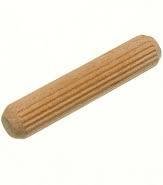The hydraulic is an issue when using tenons, dowels or dominoes.
With dowels, the solution is simple: Use fluted dowels that allows a release of the hydraulic pressure. That solution is not available to tenon users or domino users.
When I glued up 1/2” diameter fiberglass pultrusion shaft into a Bakelite sphere using epoxy, the hydraulic pressure was so strong that it repeatedly drove the shaft completely out of the hole.
To resolve that issue, I drilled a small pressure relief hole (about 1/8” diameter) adjacent to the 1/2” hole I had drilled to accept the 1/2” diameter shaft. I angled the hole so that it would intersect the 1/2” diameter hole near the bottom of the hole.
After that, assembly was easy. I added a coating of epoxy to the interior of the hole and drove the shaft into the hole. A good deal of the epoxy was squeegeed off the shaft hole and driven to the bottom of the hole. Some of the epoxy was driven up the relief hole and extruded out that hole. The hydraulic effect was eliminated and the joint stayed tight.
I suspect you could do the same with a domino. It would be a lot less work than the solution suggested in the video.
Alternatively, using a jig for that purpose, you could make shallow grooves using a narrow blade on a table saw. The groves would run along the length of the dominoes allowing a release of the hydraulic pressure.
The video used an English language sound-over for the dialog. I read lips and I found that very distracting as the words did not match the lip movement. In any case, I did not hear the term “hydraulic pressure”, but I might have been distracted because of the lip reading. At any rate, that is the culprit behind the problem. There are other ways to defeat that problem.
If someone made threaded blocks that could be mounted in a vise, then the fluting that resolves this issue in dowels could be pressed into the dominoes (and also make for a slightly looser fit. Not to worry about the fit. As the wood absorbs the moisture from the glue, it will expand back to its original shape and make a tight fit.)


